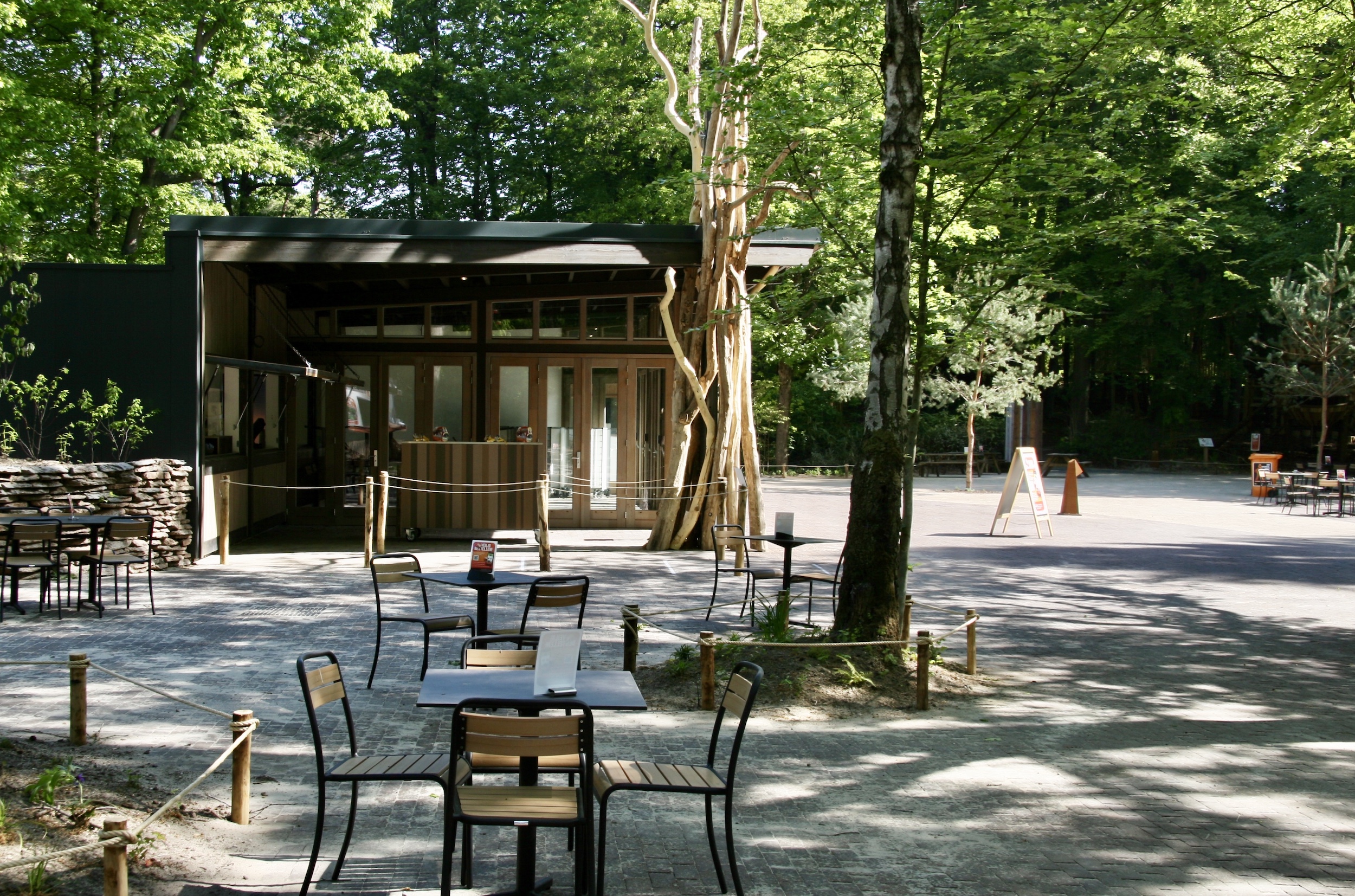The central core of the masterplan, shaped by a restaurant.
These structure for feeding Homo Sapiens is part of an innovative concept for a zoo that focuses on the impact on nature and the animals with which we share this planet; advocating ecological wellbeing and biodiversity.
Learn more about the masterplan here

Site Sketch
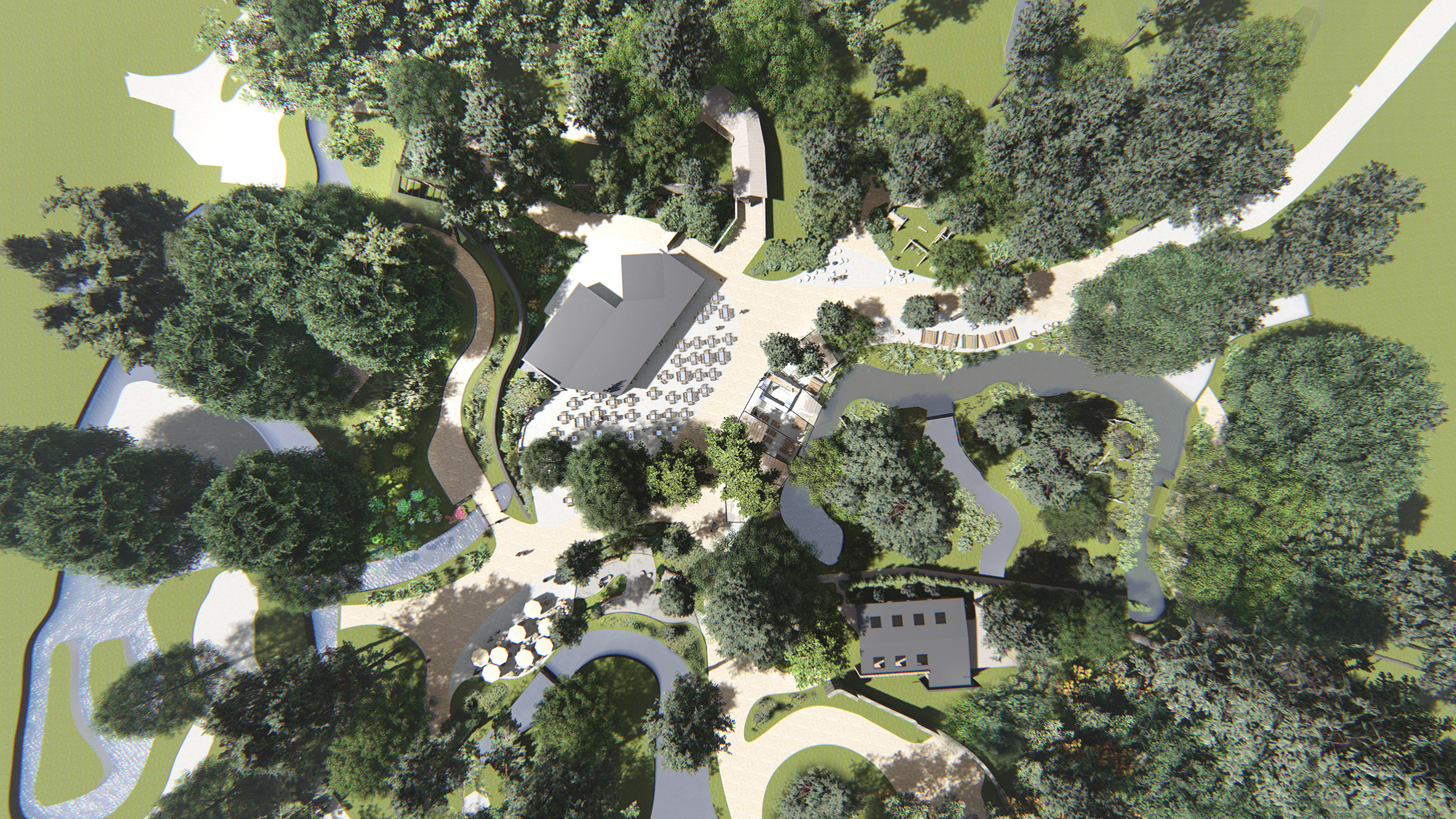
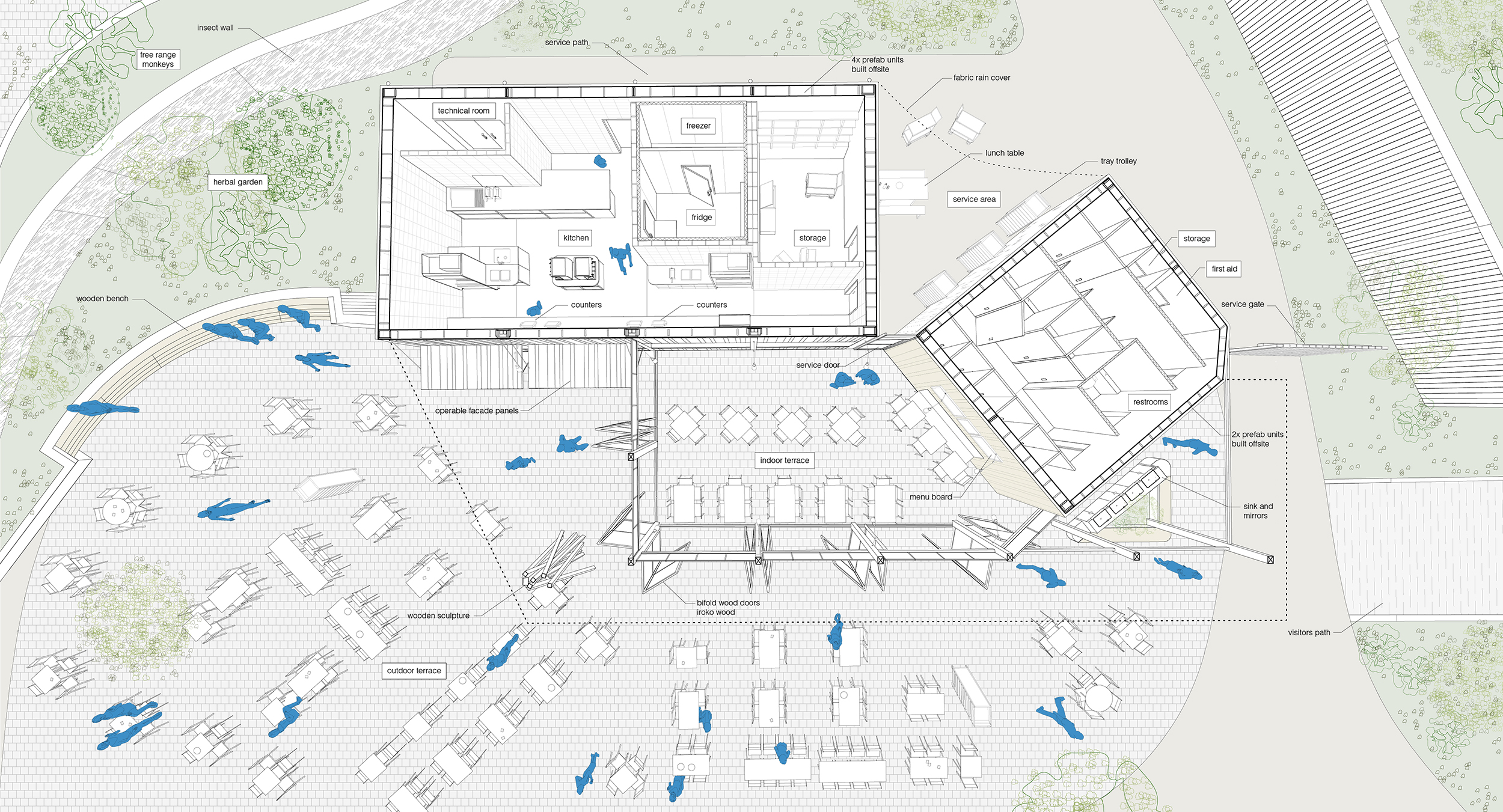
Modular Construction
The building is composed by 4+2 wooden modules that are prefab and then assembled onsite. This technique speeds up construction schedule and downsize costs.
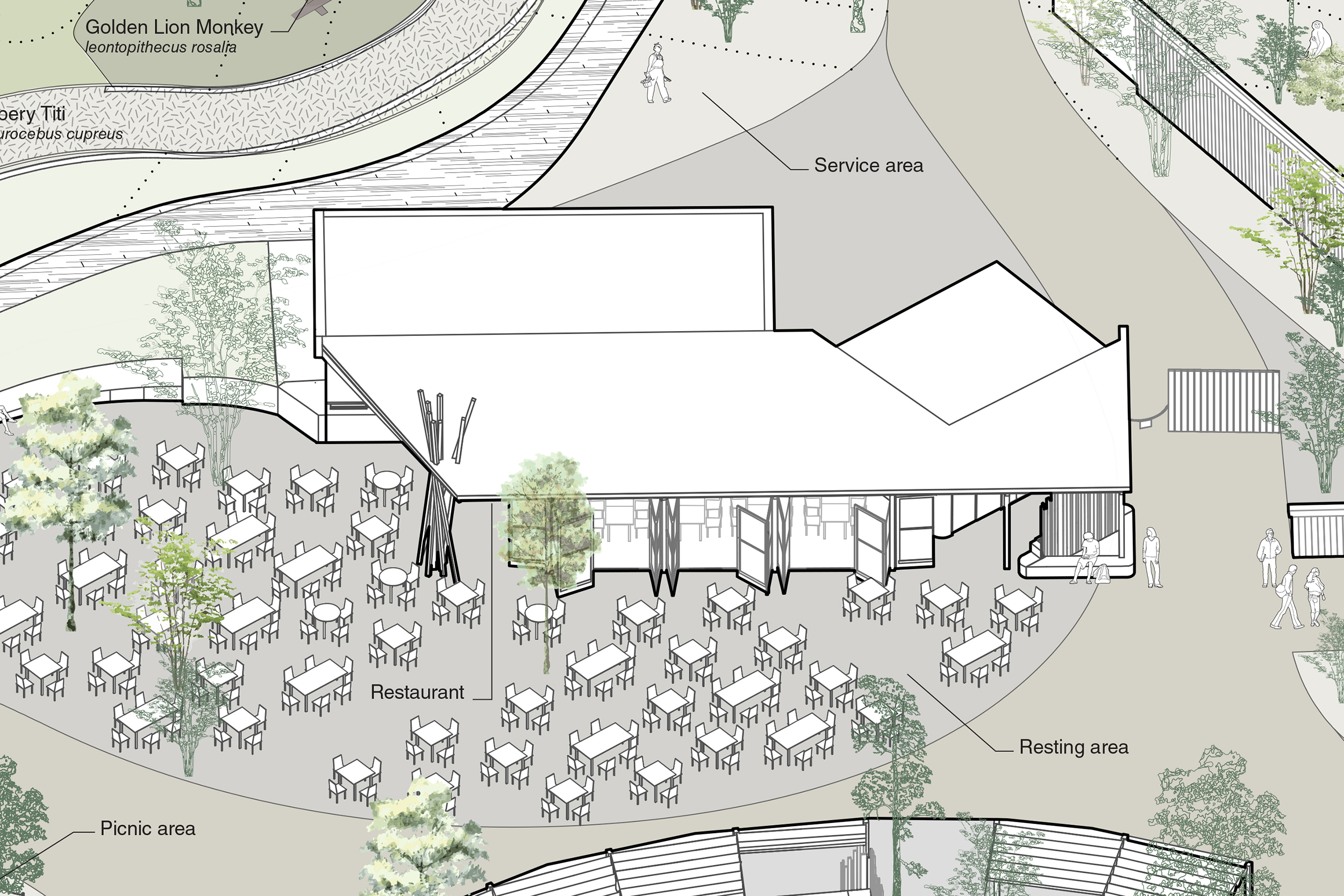
Axonometric Perspective
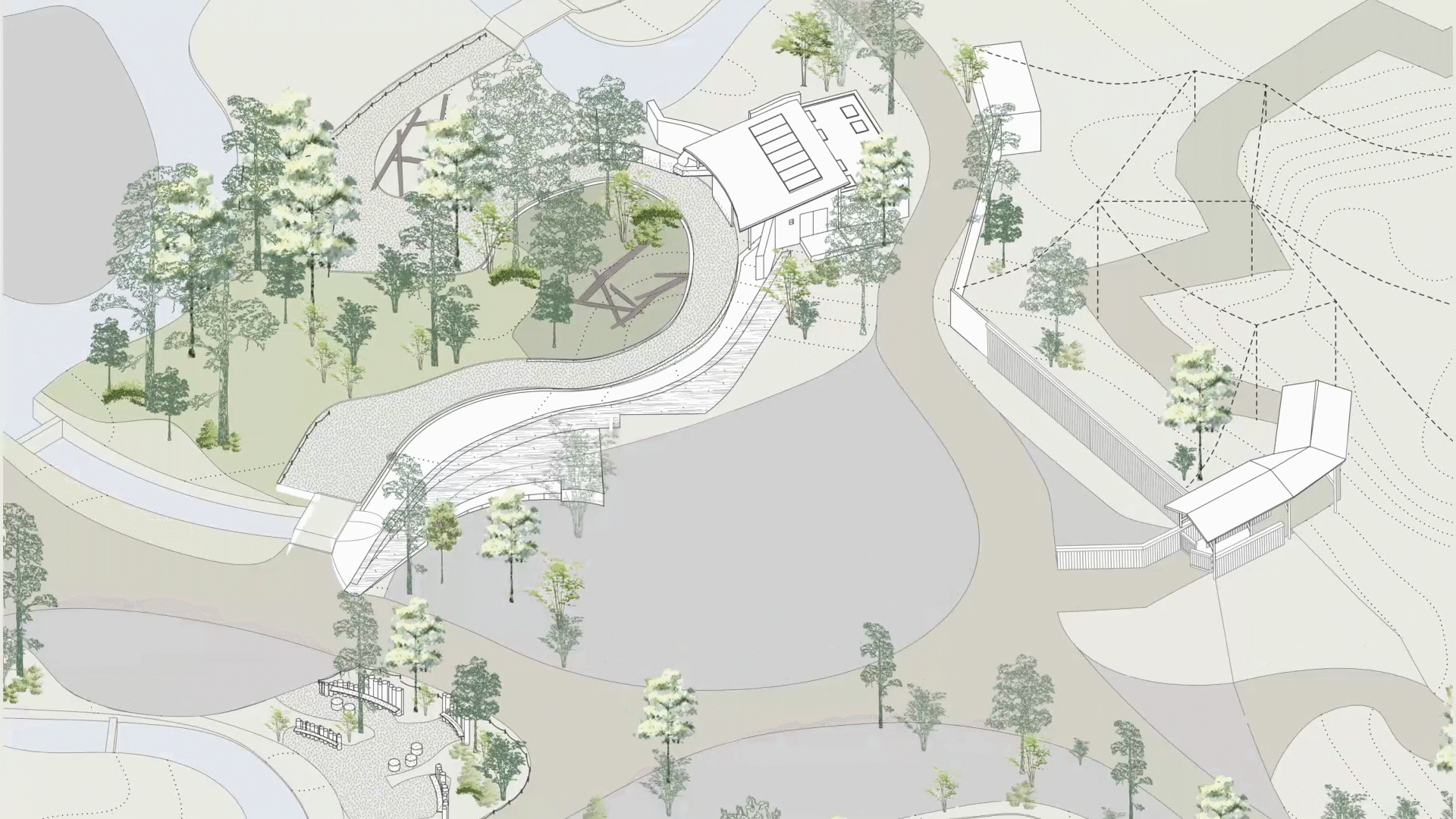
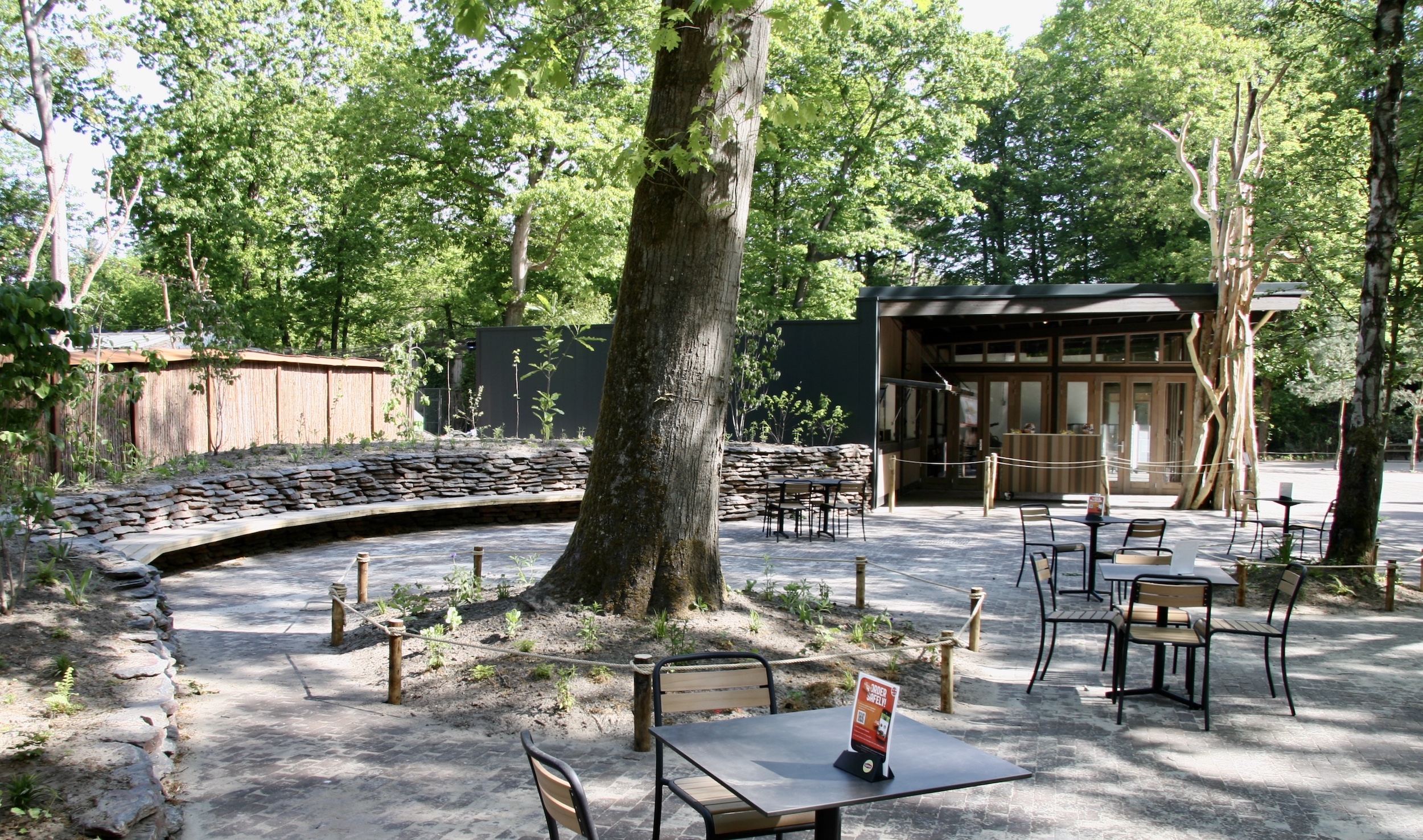
Pavilion and Landscape – Summer 2020
Connecting inside to outside
The biggest of the terraces flows into the building’s sheltered area which can be also closed in autumn or winter. Only the service programs such as kitchen, storage and restrooms are permanently enclosed.

Pavilion in Context – Summer 2020
Positioning
The restaurant’s volumetry responds to the levels of publicity of the area; those of the staff are connected to the back of house programs: whereas the visitor’s path merges with an open public terrace.
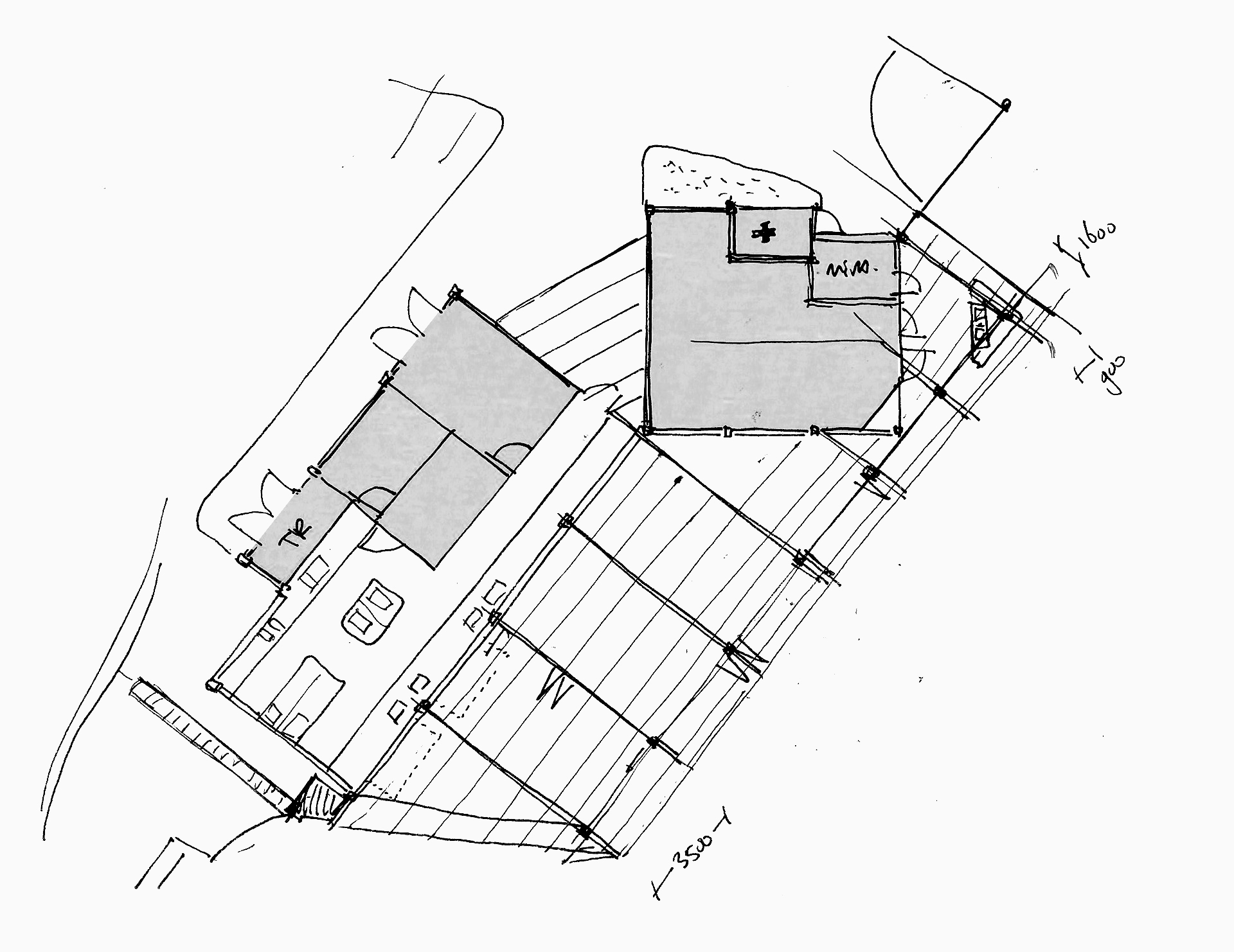
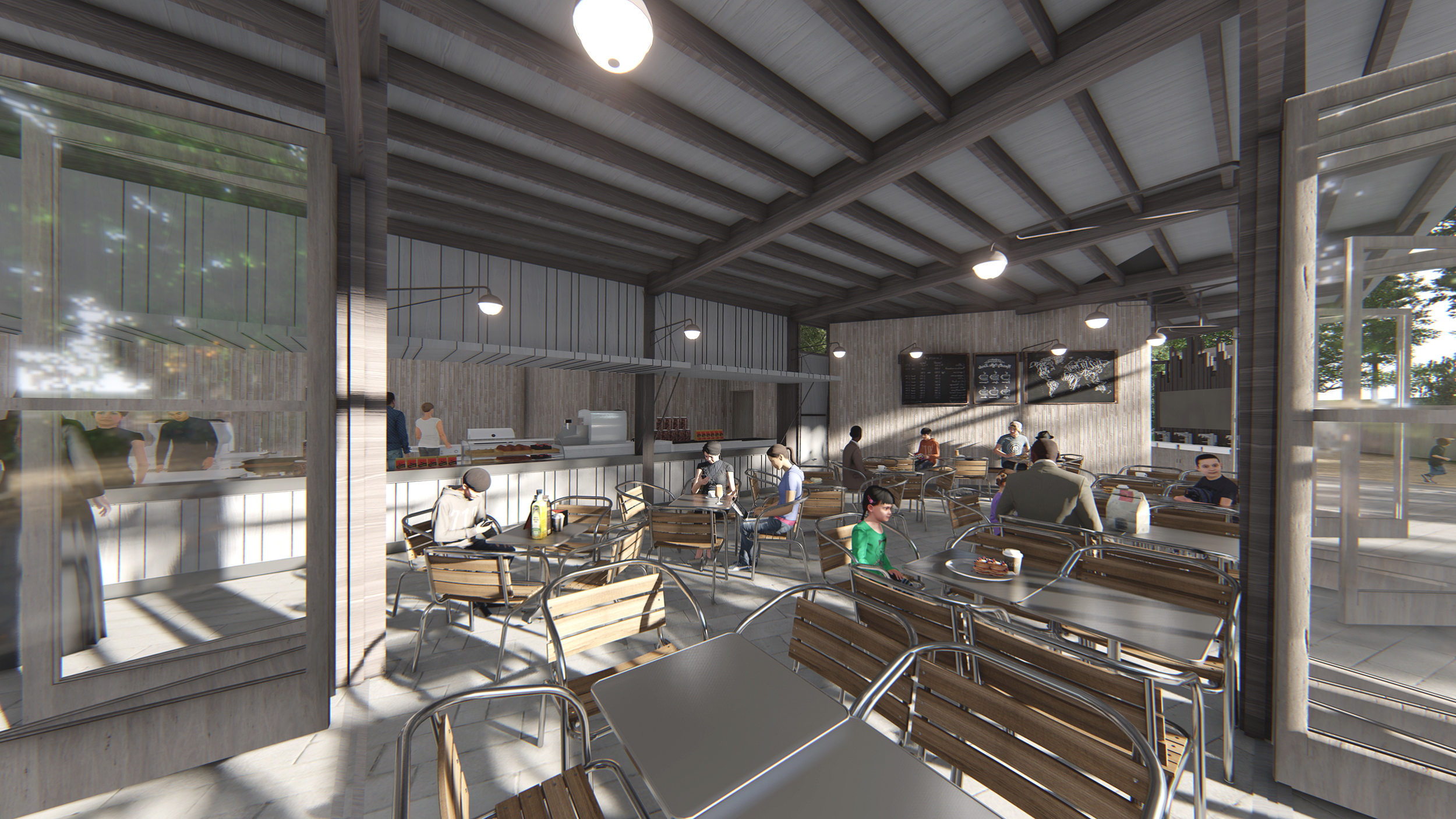
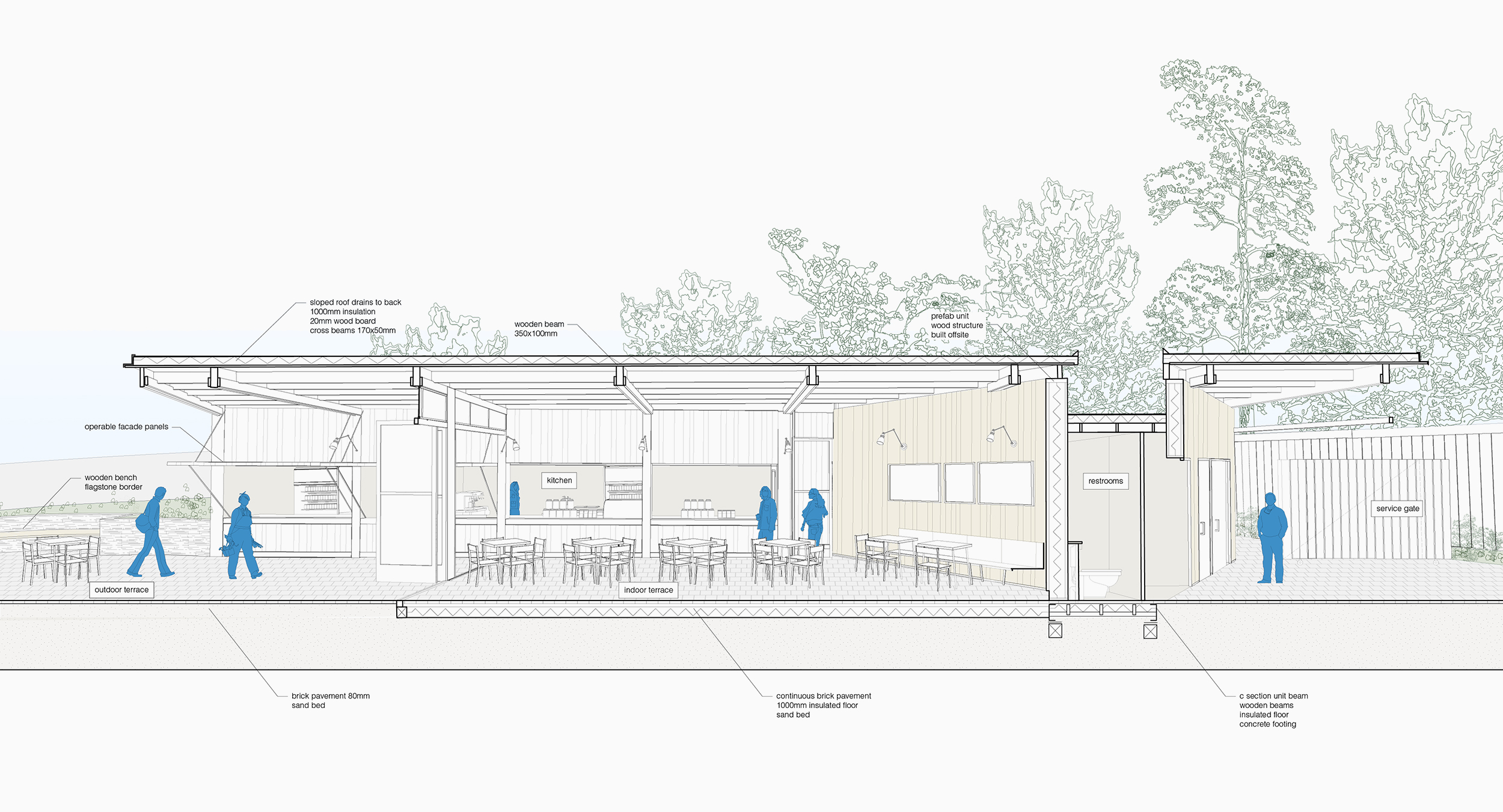
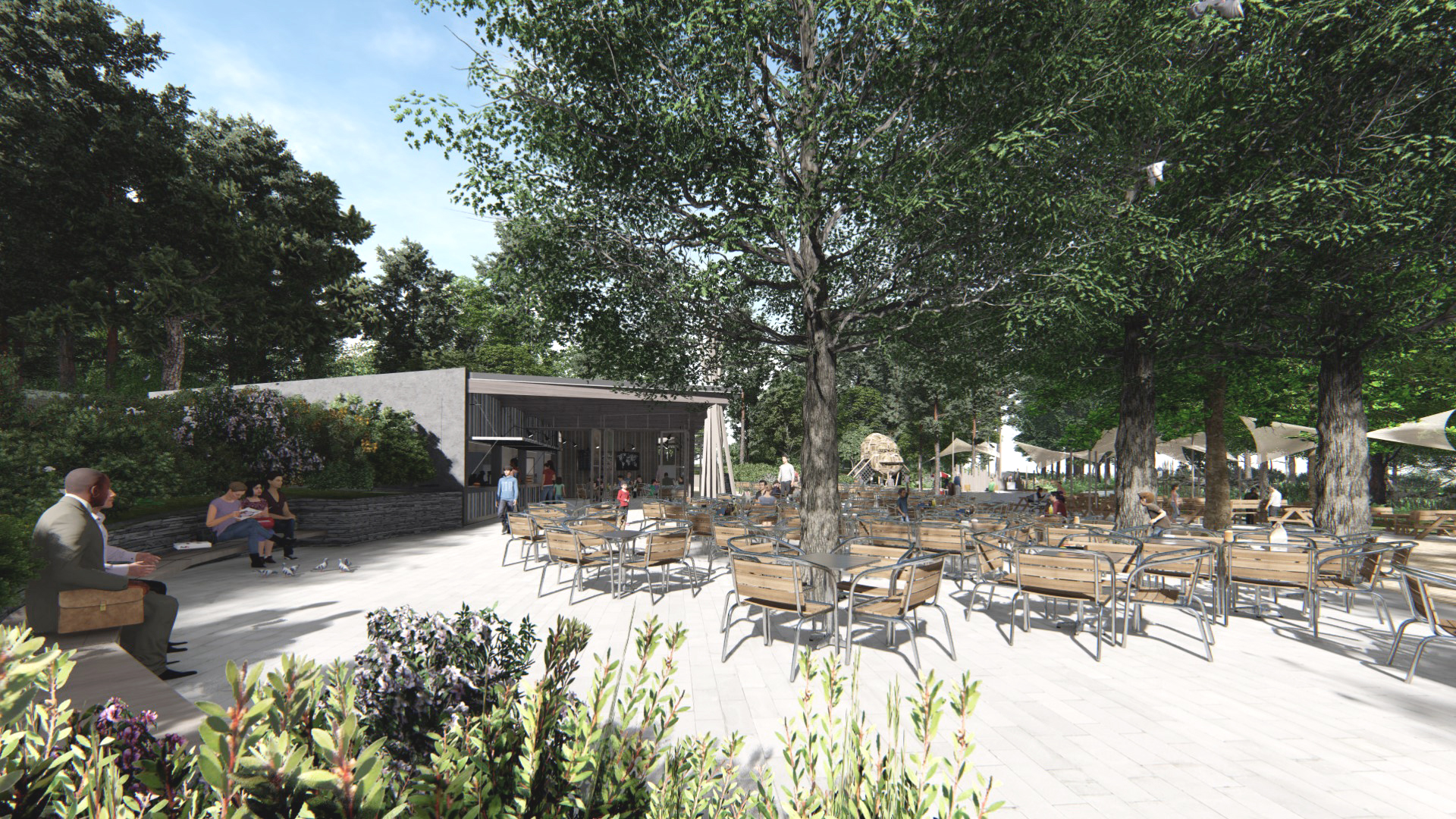
Terraces and walk through
The main area serves the restaurant itself, but there are a contiguous coffee spot, pizza stand and ice cream cart that look over various species’ spots.
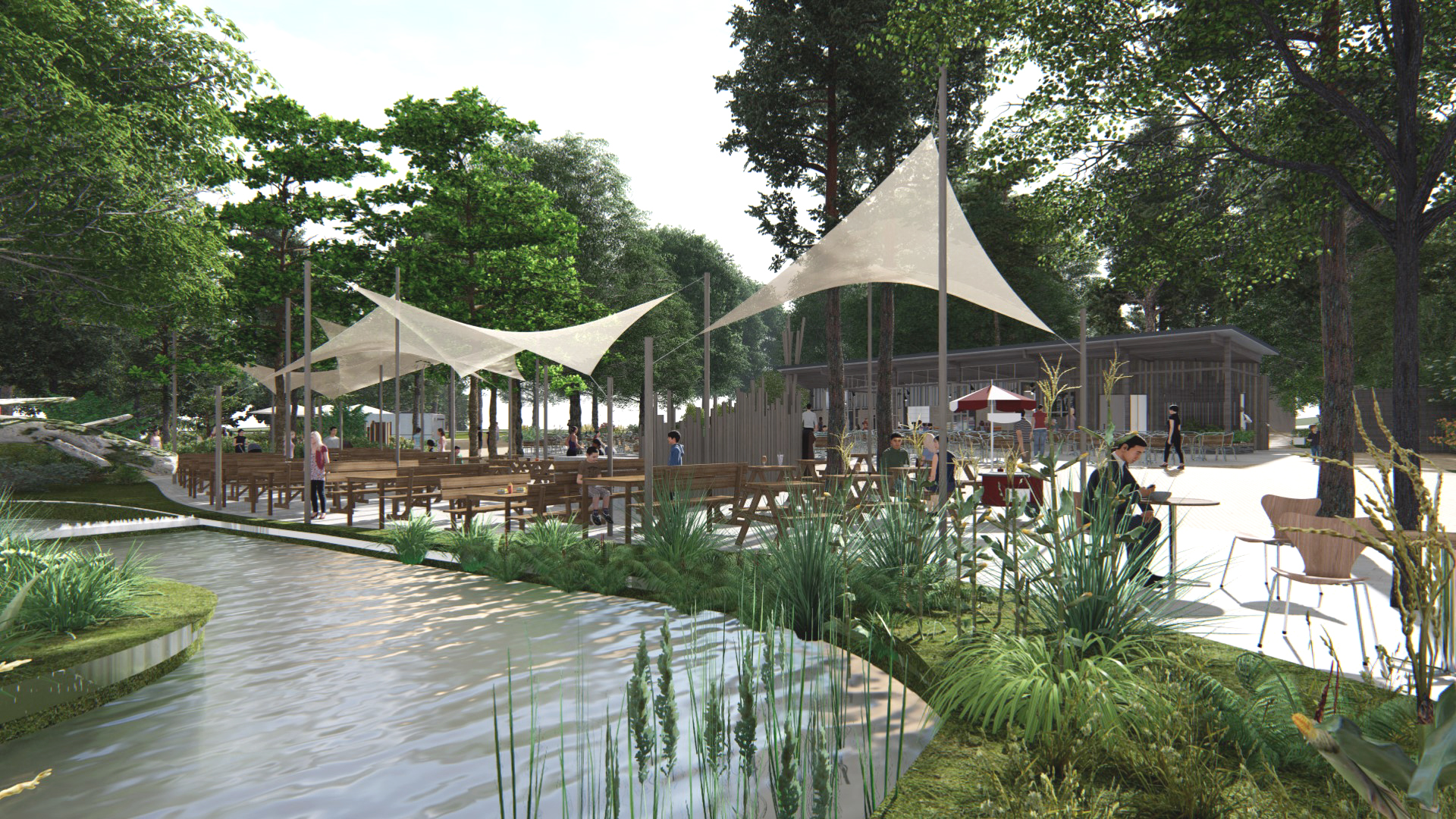

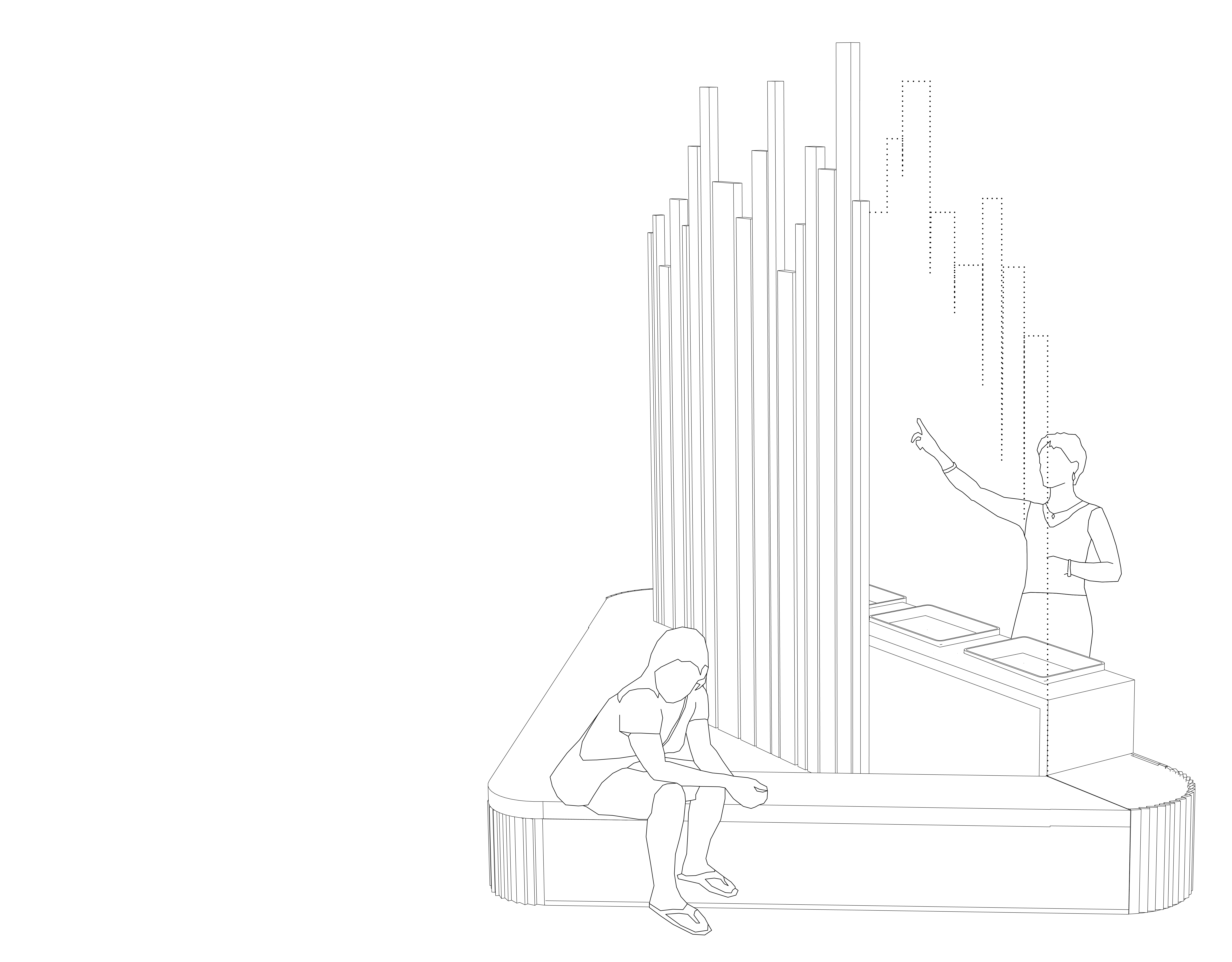
Diagram
Integration of service area
The restrooms entrance is given some privacy through a triangular bench that also holds the mirror and serves as a meeting point itself.
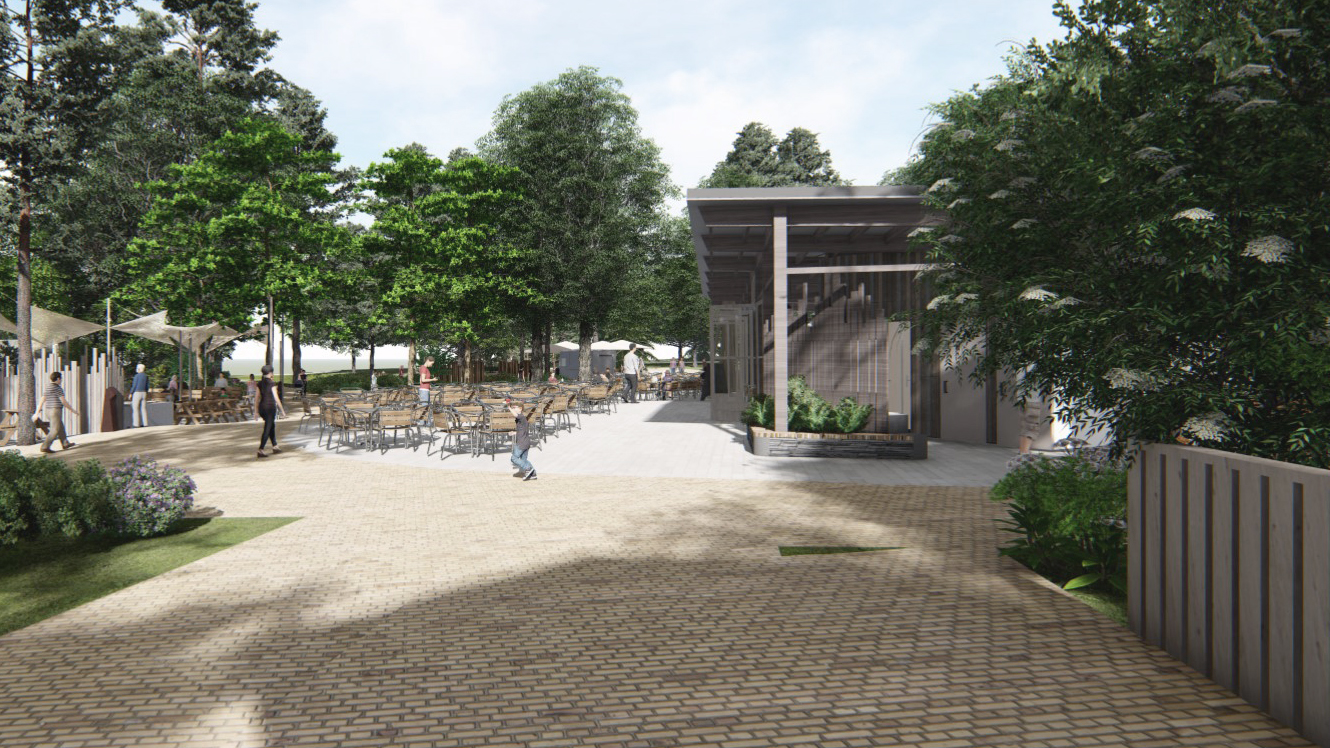

Construction
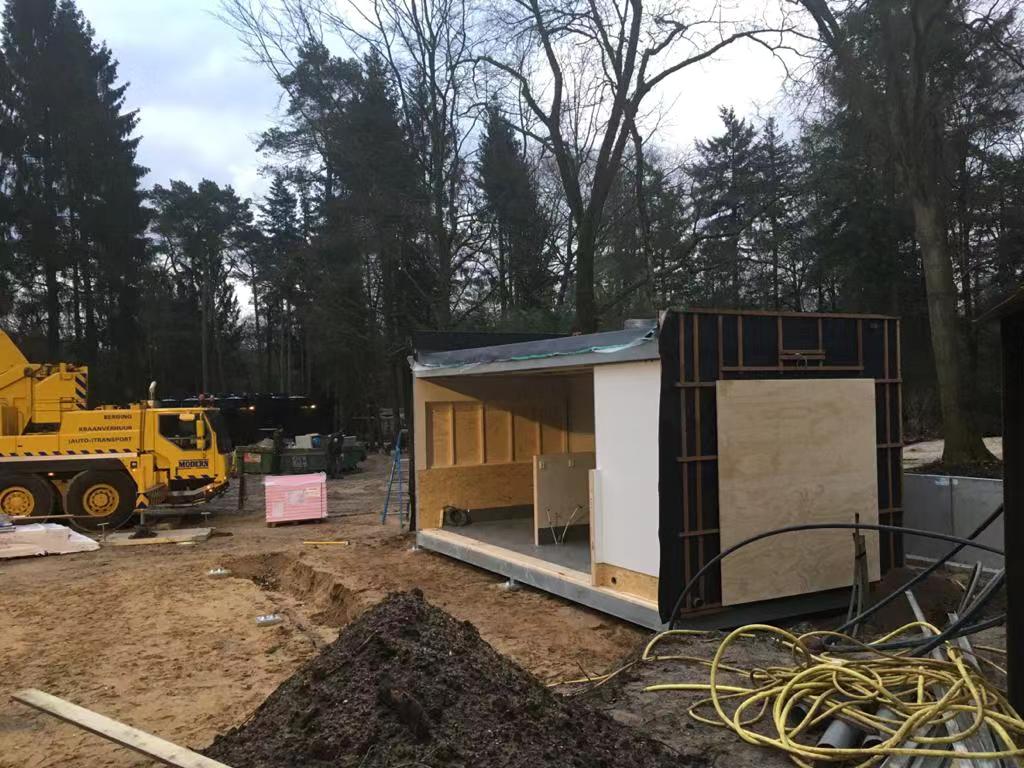
Prefab Technique
The wooden structure is first assembled at a warehouse, then the insulation and installations are placed and finally, on site, builders make the finishings.

Assembling the wood canopy
Besides the prefab modules that constitute the enclosed areas, there is an outdoor sheltered area assembled onsite.
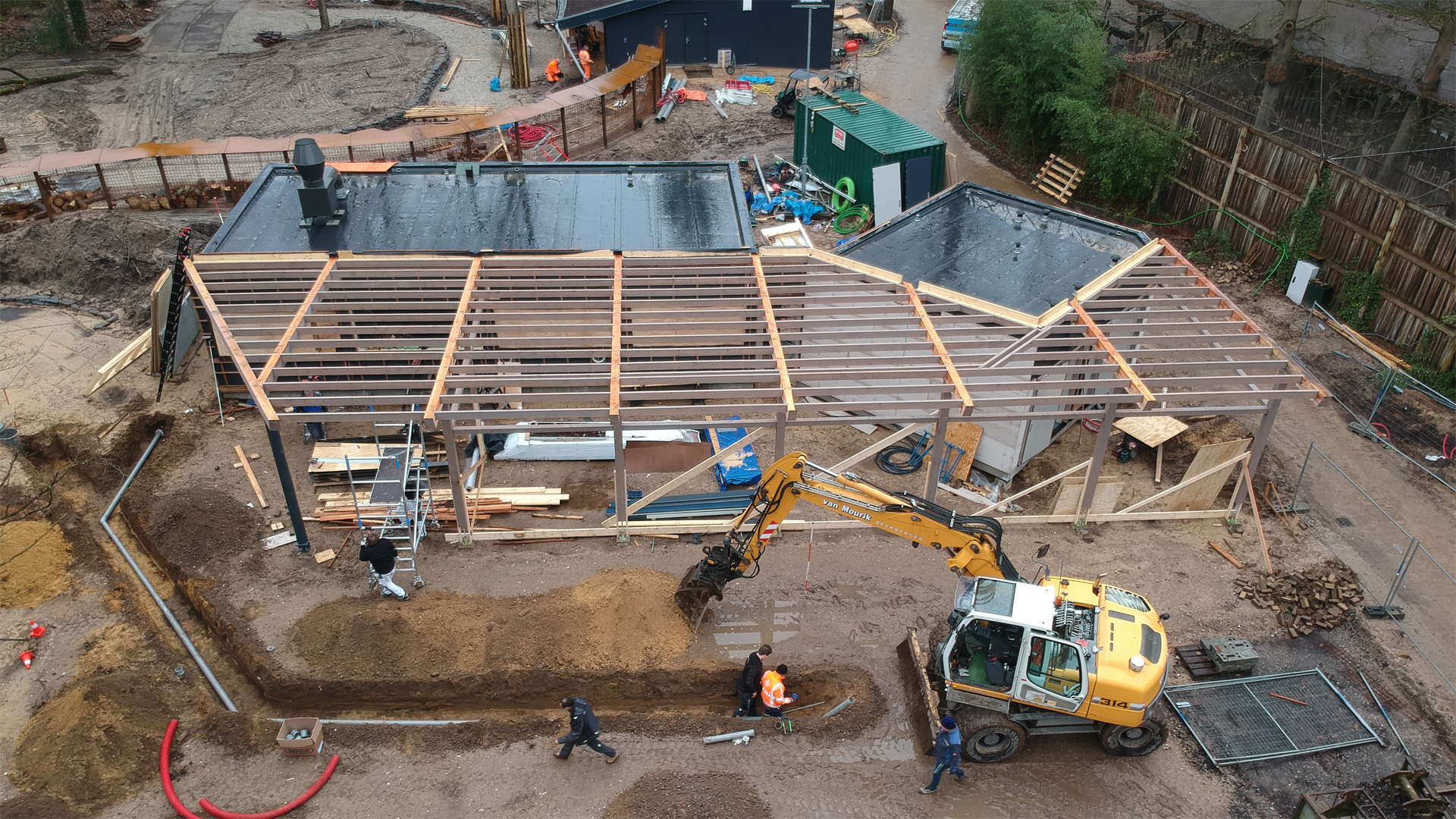

Team: Martijn de Geus and Han Zhang with Victor Tee, Kenji Heda, Elena Gamez, Oxana Sosnitskaya, Alexandra Platovska, Lulu Li
Project Year: 2018-2020
Technical Design Architecture: Bilfinger Tebodin Netherlands BV
Contractor: Strandbaak BV
Location: Apeldoorn, The Netherlands
